The UNESCO site of Mycenae is one of the most important archaeological sites in Greece. Here’s some information about Ancient Mycenae, its history, and how to visit on a day trip from Athens.
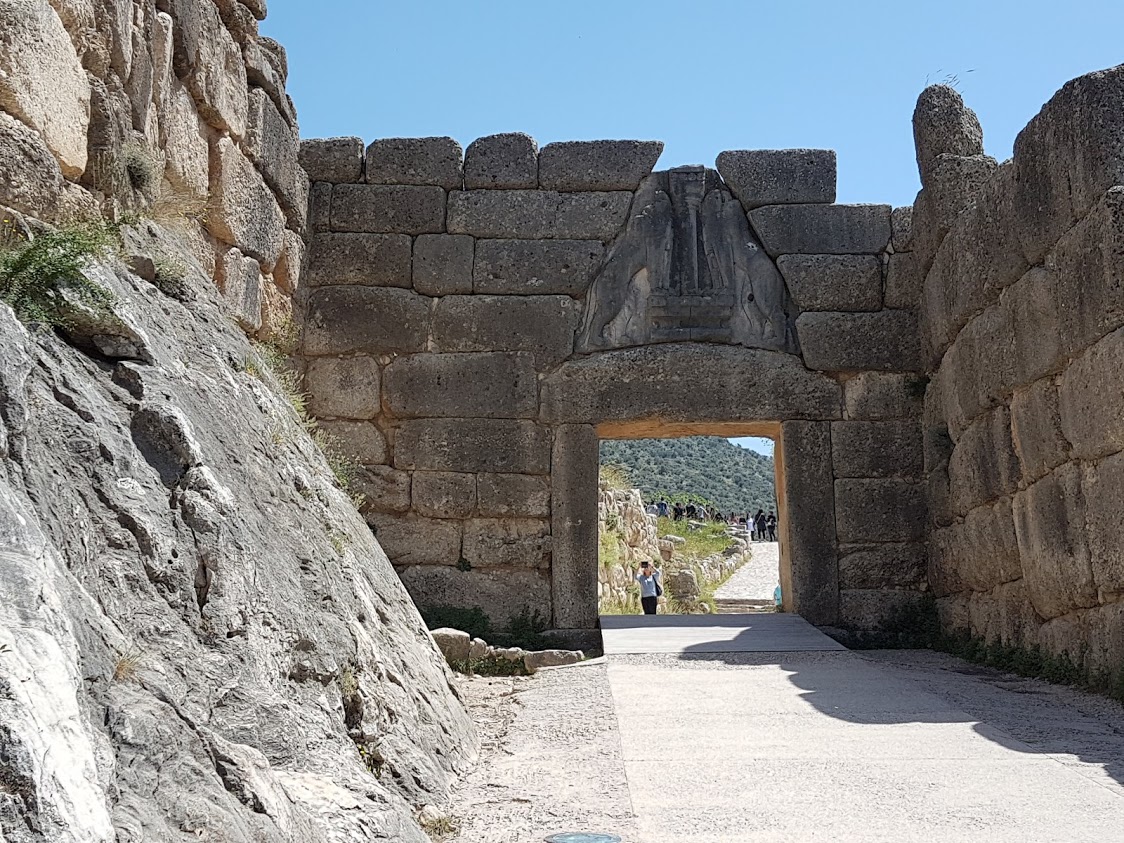
Ancient Mycenae in Greece
Ancient Mycenae is located in the Region of Argolida in the Peloponnese, a couple of hours away from Athens.
This is the area where an early Greek civilization, called the Mycenaean civilization, first appeared during the 2nd millennium BC.
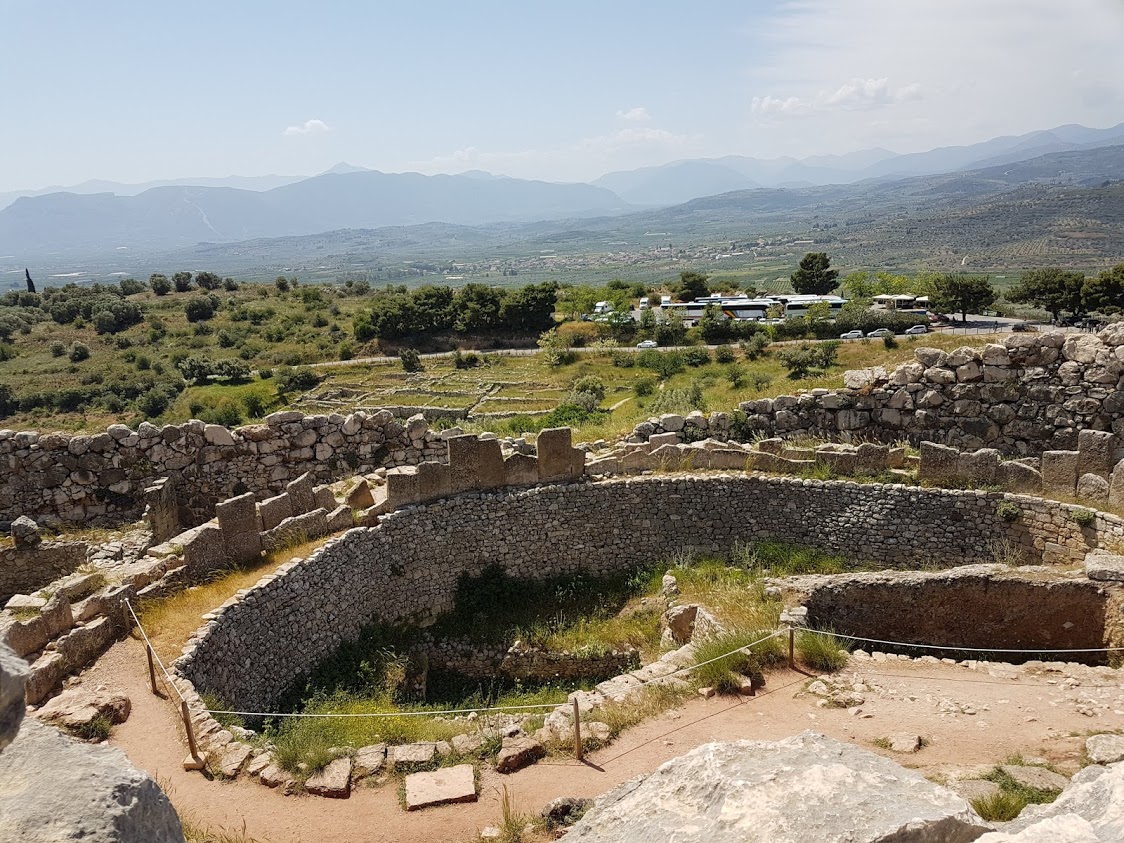
As Mycenae developed further, the new civilization spread to many more regions in the ancient world. This includes much of the Greek mainland, several Greek islands, and other countries in Europe and the Middle East.
The historical and cultural importance of Ancient Mycenae, combined with its proximity to the Greek capital, make it a popular attraction for visitors.
Here is some information about the Mycenaean civilisation and the history of the impressive archaeological site.
The Ancient Kingdom of Mycenae
The archaeological site of Mycenae is situated on a rocky outcrop between two hills in the Argolida area. It is estimated that the area was first occupied in the 7th millennium BC. However, the Mycenaean civilization reached its peak between 1,350 and 1,200 BC.
The location was chosen as it offered natural shelter from invasions. Anyone who tried to attack the Mycenaean citadel would be totally exposed.
For extra protection, thick fortified walls were built around the acropolis. They are called Cyclopean, and rightly so. Who else could have constructed 12-metre tall and 5,5 metre thick walls but the mighty one-eyed Cyclops?
Behind the walls, there were several buildings, reserved for the upper and middle-class people. Among others, this included the lavish king’s palace and the remarkable Mycenaean tombs.
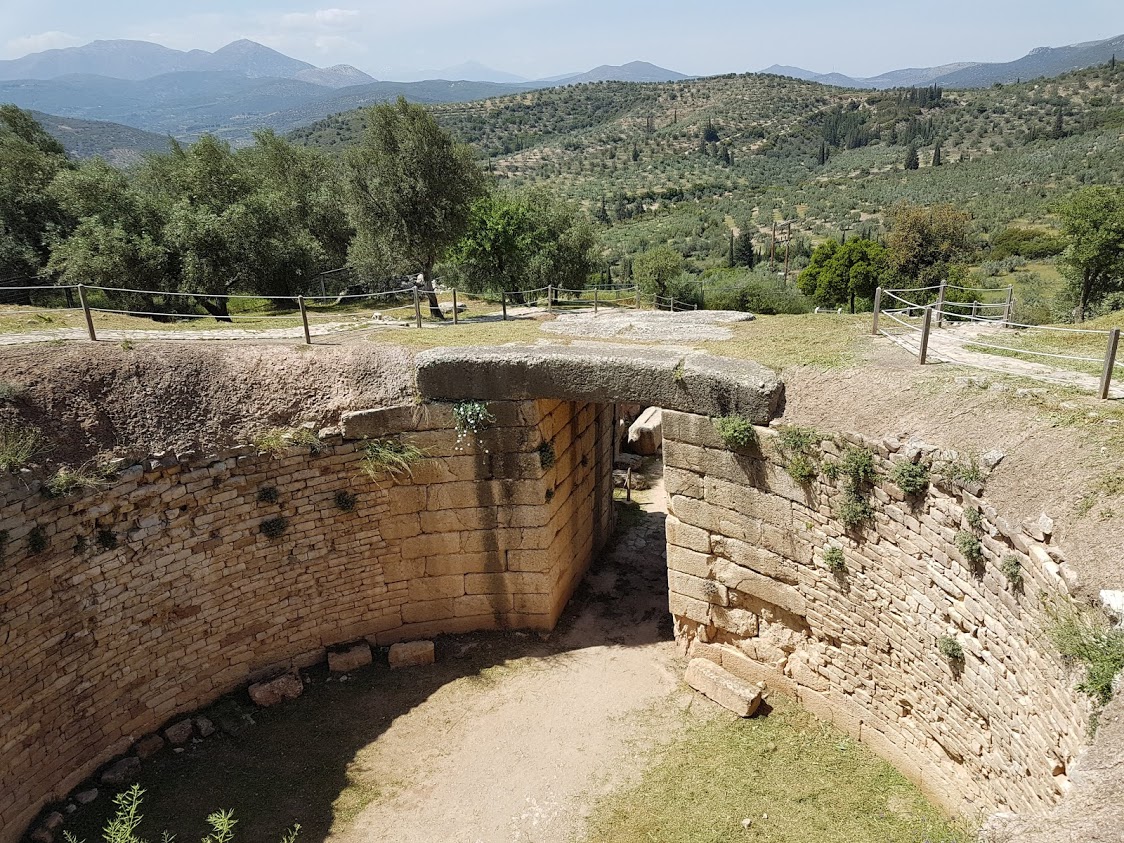
The site’s underground cistern guaranteed that water would be available in times of siege. Other buildings and warehouses existed both inside and outside the walls.
Expansion of the Mycenaean civilization
The Mycenaean civilization spread out to many regions of mainland Greece, like Attica and Boeotia.
The seafaring Mycenaeans also travelled through the Aegean Sea. They reached several Aegean islands, such as Santorini and Milos in the Cyclades, Evia and Crete.

The Mycenaeans were in close contact with the Minoan civilization, and eventually took over when the latter collapsed.
Since trade played a vital role in the Mycenaean economy, they also expanded to North Greece, Asia Minor, the Eastern Mediterranean world and Cyprus.
Archaeological evidence suggests that they travelled as far as today’s Syria and Spain. Artifacts have also been discovered in other European countries including Germany, Great Britain and even Georgia.
Mycenaean archaeological sites
Archaeologists have excavated over 100 Mycenaean towns in several areas in Greece. The exact relationship between them is not entirely clear.
Apart from Ancient Mycenae, the most famous ones are Ancient Tiryns, Thebes and the palace of Nestor in Pylos. The latter is the best preserved Mycenaean site.
Just like the Mycenae archaeological site, other Mycenaean centres were built on well-protected high points, to facilitate supervision of the surrounding areas. In most cases, the palaces were surrounded by thick Cyclopean walls.
Hierarchy in the Mycenaean centers
A firm hierarchy was in place in all the Mycenaean centers. The king (wanax) was the supreme leader.
There were also priests, military officials, technicians such as sculptors, metal workers and weavers, free men and slaves.
People ranking high in the hierarchy lived inside the city walls. In contrast, the majority of people belonging to the lower classes lived outside the citadel walls.
Science and culture in the Mycenaean age
During the Mycenaean period, several innovations were introduced in the fields of architecture, engineering, military infrastructure and culture.
The Mycenaeans used a script called Linear B, which was a combination of symbols. This script, which is a primal form of the Greek language, was deciphered in 1953.

Archaeologists have unearthed several tablets with this script, which have provided invaluable information on the Mycenaeans’ administrative affairs.
To the delight of archaeologists, they kept accurate accounts of people, names, and professions, similarly to a modern census. There is also information on commerce, transportation and storage of goods.
In terms of religion, the Mycenaeans worshipped many of the Olympic gods. Cults of the 12 Olympians have been identified in the Mycenaean era. Animal sacrifice and communal feasting were common practices.
And now that we’ve seen why the Mycenaean civilisation was so important, let’s go back to Ancient Mycenae and find out what the site looked like.
The King’s palace in Mycenae archaeological site
Mycenae was the richest palatial centre of the Late Bronze Age in Greece. The majority of the imposing ruins that we can see today date from between 1,350 and 1,200 BC.
The king’s palace was located on the highest point of the acropolis, and was extremely luxurious.
There was a main room, where the king accepted visitors, and where meetings and official ceremonies took place.
The interior of the palace was decorated with elaborate, colourful frescoes. Fragments are exhibited at various museums, including the National Archaeological Museum in Athens.
The Mycenaean tholos tombs
Some of the most important ruins excavated in the ancient site are the Mycenaean tholos tombs. They were large burial chambers, reserved for kings and other wealthy Mycenaeans.
Many other types of tombs existed in Mycenae. However, the tholos tombs are a great example of the Mycenaeans’ advanced knowledge of engineering and construction.
Originally, the tombs were outside the city walls. During the 13th century, a new wall was built around them so they were included inside the acropolis.
According to the burial traditions of the times, the deceased were buried along with numerous valuable artifacts.
The objects which have been discovered in the royal tombs are made out of precious metals and other fine materials and are very sophisticated.
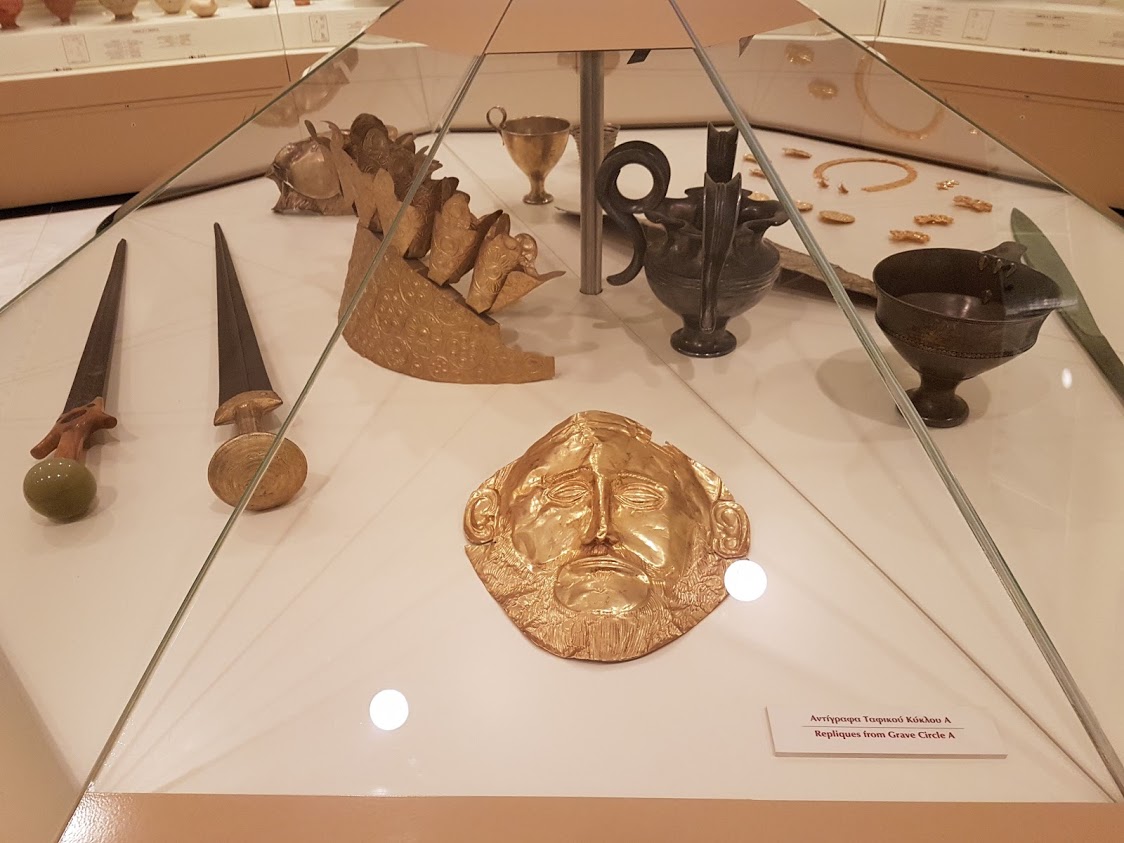
The mask of the mythical Agamemnon
Among others, archaeologists have revealed fabulous golden masks, including the one which belonged to king Agamemnon. Other findings include jewelry decorated with precious stones and all types of ceremonial weapons.
The Lion Gate
The main gate to the Acropolis, the Lion Gate, was built in 1,250 BC, and is the landmark of Ancient Mycenae.

The impressive gate consists of two massive monoliths, and measures around 3 metres wide and 3 metres tall. It owes its name to a pair of lionesses that have been carved in the stone.
Remarkably, the gate has stood the test of time and natural disasters.
The famous Kings of Mycenae
In Greek mythology, the founder and first king of the Kingdom of Mycenae was the legendary Perseus.
He was the son of the almighty Zeus and a mortal woman, Danae. Her father was Acrisius, an early King of the nearby city of Argos.
A later king of Mycenae was the son of Pelops, Atreus. You may recognize the name Pelops as the ruler of the Peloponnese and the founder of the Ancient Olympic Games.
Agamemnon and Menelaos, the famous kings who took part in the Trojan War, were the sons of Atreus.
Paris, Helen and the Trojan War
The Trojan War is one of the most important wars in the Mycenaean period, and all of ancient Greece.
The war started after a Trojan prince, Paris, abducted Helen of Troy, the wife of Menelaos. Helen of Troy is known in Greek as “Orea Eleni” – Beautiful Helen. Allegedly, she was the most beautiful woman in the world.
Whether this was an actual abduction, or if Helen followed Paris willingly, is probably uncertain. However, it gave the Mycenaean Greeks a pretext to unite against the Trojans. The actual causes for this massive expedition were mostly financial.
It is estimated that the Trojan war happened around 1,200 BC and lasted for about 10 years. This may have been the first and last time that all Mycenaean Kingdoms were united for a joint mission.
The famous warfare inspired the famous Homeric poems, Iliad and Odyssey. It was also the subject of numerous other tragedies and plays in Classical and Roman Greece, and later on.
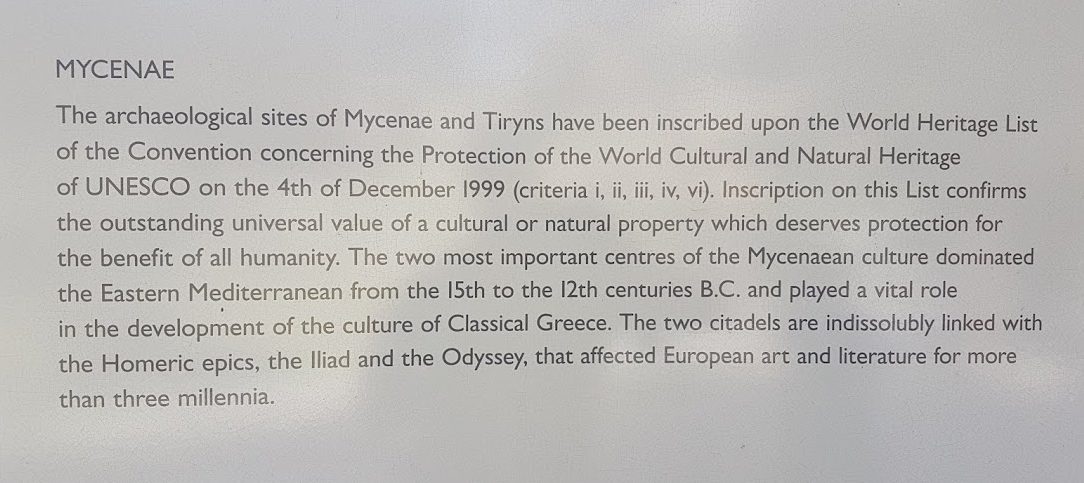
It’s not like there was peace in the rest of the world though. Quite the contrary – those were fairly turbulent times.
The Egyptians, the Hittites, the mysterious so-called Sea People and many others were involved in wars. As a result, trade in the wider area diminished.
Along with Dorian tribes arriving from the north, this partly explains the eventual decline of the Mycenaean civilization.
Ancient Mycenae was gradually abandoned in the next centuries. Pausanias, the famous Greek geographer, visited in the 2nd century AD, at which point the site was already abandoned.
What is there to see in Mycenae
Εxcavations in Ancient Mycenae began in the mid-19th century. Several people have worked here, including the amateur archaeologist Heinrich Schliemann, the man who later discovered ancient Troy.
Considering how early the site was abandoned, and the amount of looting that took place in later centuries, there is a lot to see in the archaeological site of Mycenae.
Among the most impressive remains are large parts of the Cyclopean Walls, along with the Lions Gate.
Visitors can also see the majestic tholos tomb of Agamemnon, known as the Treasure of Atreus.
The main construction has been miraculously preserved over the millennia. Parts of its decoration have been removed and can be found in museums all over Europe.
It can take you anywhere from 2 to 4 hours to explore the site and the museum. If you are going in summer, try to avoid the hottest hours of the day, and bring lots of water!
The Museum in Mycenae
The funerary artifacts unearthed during the excavations are exhibited in the adjacent Mycenae museum. The findings follow the history of the site, starting from Greek prehistory and continuing throughout the Mycenaean period.
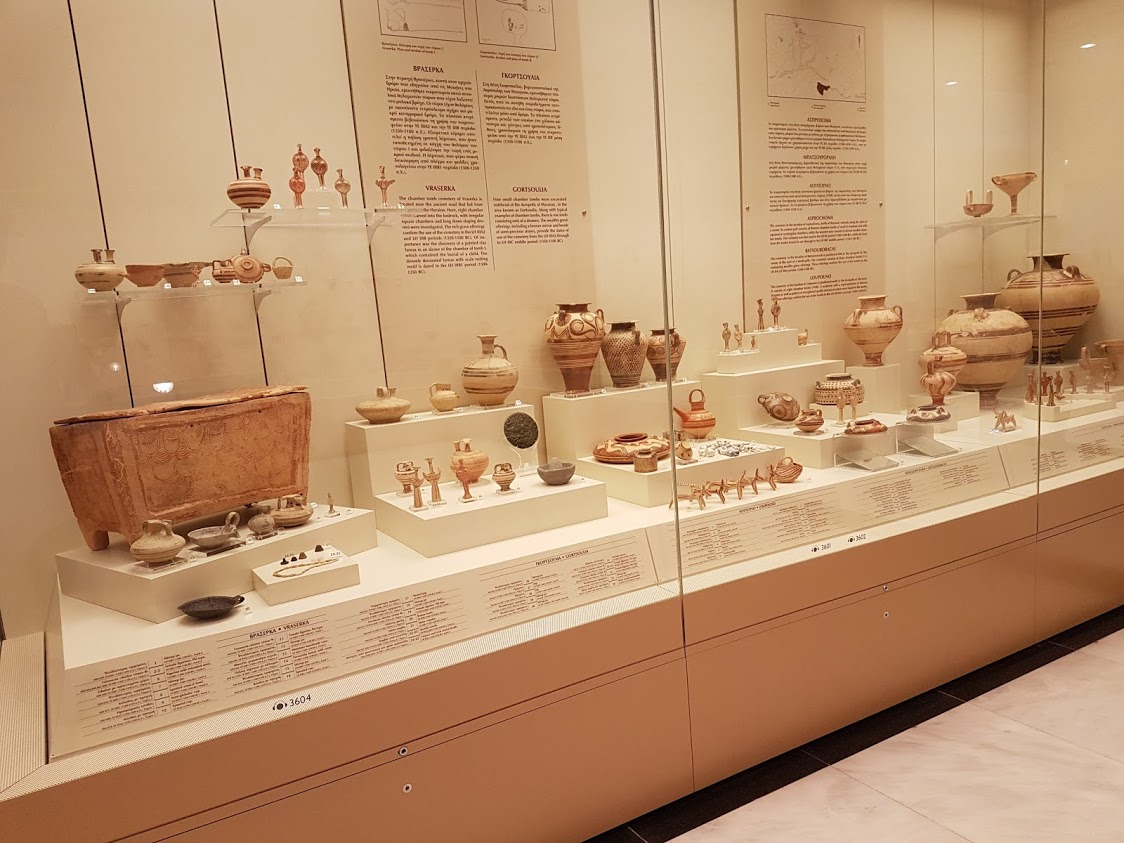
Visitors can find information about the everyday life of the Mycenaeans, along with their funerary customs. The exhibition includes artifacts from the various types of Mycenaean tombs – Grave Circle A, Grave Circle B and tholos tombs.
Visiting the archaeological site of Mycenae
The ancient site of Mycenae is located in the Peloponnese, about 100 kms away from Athens.
If you look on Google Maps, you will notice a place with the name “Mykines”. This is the Greek word for “Mycenae”.
It takes under 2 hours to get there by car. If you don’t want to drive in Greece, you can also use the public KTEL Argolidas bus.
You would need to take the bus from Kifissos bus station in Athens to Ficthi village close to Mycenae. A one way ticket only costs 10.80 euro. You can then either take a short taxi ride, or walk.
Confusingly, there is another archaeological site further south in the Peloponnese, called “Ancient Messene”. Depending on how you pronounce “Mycenae”, the two words sound pretty similar.
If you are travelling independently, try to stick to “Mykines” when talking to Greek people.
Guided tour to Ancient Mycenae
As Mycenae is pretty close to Athens, it’s a popular day trip. In fact, it’s often included in guided tours along with the stunning ancient theatre of Epidaurus and the quaint Nafplion town.
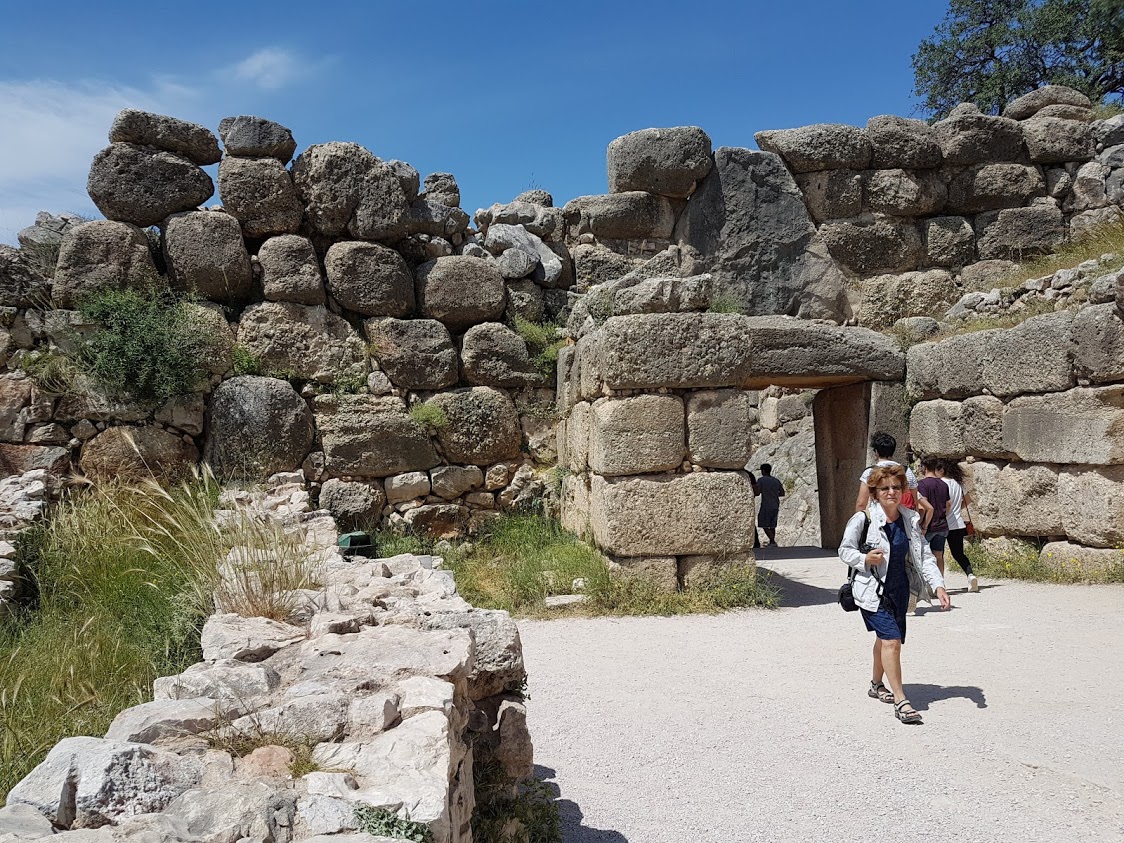
Here’s a popular and great value full day tour to Mycenae, Epidaurus and Nafplion. This is a great idea for people who want to see as much as they can, and learn a lot of our ancient history.
If you want to visit these three places on your own, my best suggestion is to rent a car. On the first day you can visit Mycenae, then head to Nafplio, spend the night, and visit Epidaurus on your way back. Bus connections aren’t always well-timed.
Overall, my suggestion is to spend more days in the Peloponnese. I have toured this beautiful region quite a few times, and there’s always something new to discover!
Frequently asked questions about Ancient Mycenae
Here are some questions visitors ask about Mycenae:
What was ancient Mycenae known for?
Ancient Mycenae was a powerful kingdom. Its king was the mythical Agamemnon, a descendant of the Perseid dynasty. The legendary king united the Greek tribes of the time and led them to war against Troy. The Trojan War inspired poets such as the famous Homer.
Where is Mycenae now?
Mycenae is in the region of Argolida in the Peloponnese, Greece. It is about 100 kms away from Athens, the capital.
What was unique about the Mycenaean civilization?
The Mycenaeans introduced many innovations in the areas of architecture, engineering and military infrastructure. In addition, they kept accounts of their affairs using a script called Linear B.
What caused the collapse of the Mycenaean?
The causes of the decline of the Ancient Mycenaean civilization are not entirely clear. It appears that Dorian invaders came from the north around 1,200 – 1,100 BC, and conquered the powerful kingdom.
What happened to Greece after the collapse of the Mycenaean civilization?
After the end of the Mycenaean period, Greece entered the Greek Dark Ages. This was a period of decline, for which there is little information. It roughly lasted from 1,100 to 800 BC, and led to the archaic period.
What did you think of Ancient Mycenae?
Have you been to Ancient Mycenae? Were you impressed by how advanced this ancient civilization was? Let me know in the comments!
Interested in finding out more about archaeological sites and ancient Greece? You might enjoy these other articles:
- Ancient Olympia in the Peloponnese
- The archaeological site of Delphi
- The most important archaeological sites of Greece
- Best Greek mythology movies
- Ten beautiful coastal cities in mainland Greece
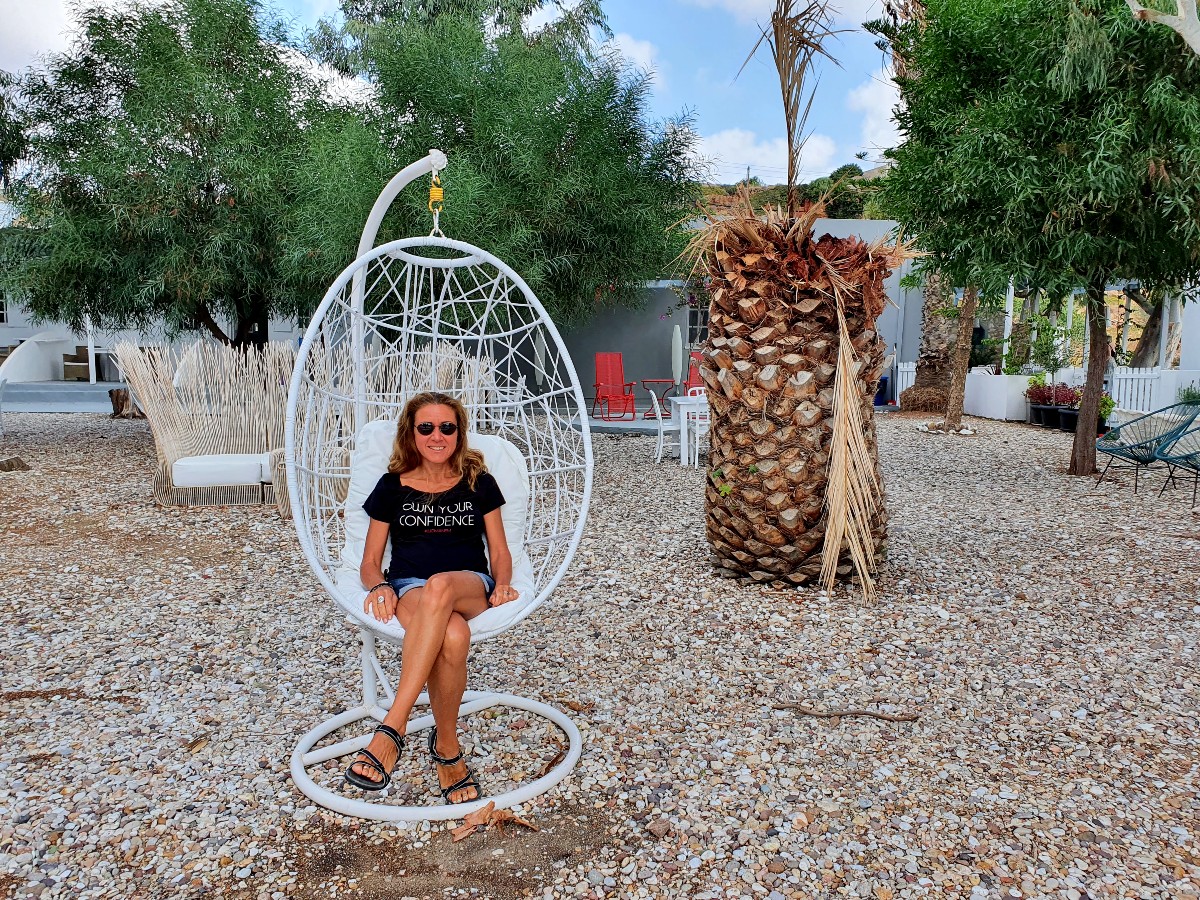 Hi! I am Vanessa, a travel writer from Athens. I hope this article on Ancient Mycenae has helped you find out a little more about this fascinating ancient site! For any questions, feel free to comment below. Alternatively, get in touch on the Real Greek Experiences FB page and FB group.
Hi! I am Vanessa, a travel writer from Athens. I hope this article on Ancient Mycenae has helped you find out a little more about this fascinating ancient site! For any questions, feel free to comment below. Alternatively, get in touch on the Real Greek Experiences FB page and FB group.
